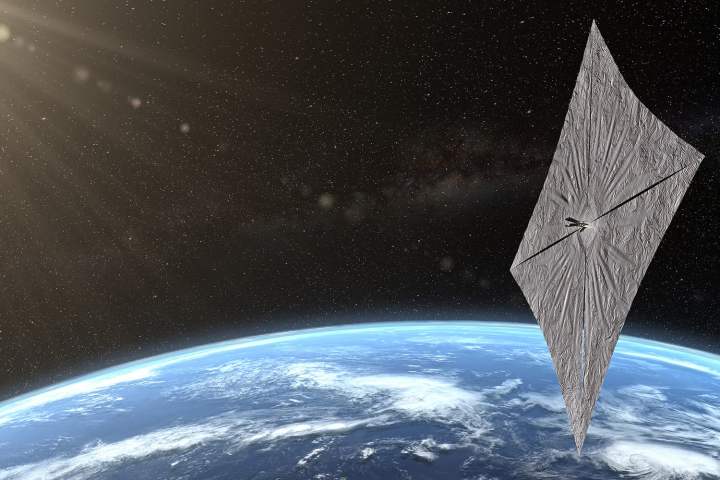
Like some kind of space-bound sailing vessel, LightSail 2, a crowdfunded spacecraft launched by the Planetary Society, Bill Nye the Science Guy’s nonprofit organization, has unfurled its solar sail in space. In doing so, it demonstrates the feasibility of so-called “solar sailing,” in which a spacecraft orbits the Earth using sunlight as its primary fuel source. In the process, it promises one way to help make space travel cheaper than it has been previously. It also means zero risk of running out of fuel, so long as it is able to harness sunlight to travel.
“Solar sailing is in its infancy, but it may become a game-changer,” Nye told Digital Trends in a recent interview. “We’ll soon be able to send our solar sail spacecraft to all sorts of destinations in our solar system, and perhaps to another star system one day.”
Deployment of the solar sail was initiated today at 11:47 a.m. PT. Full deployment of the sail was completed 3 minutes later.
LightSail 2 — the successor to a craft launched in 2015 — was propelled into space on June 25 aboard SpaceX’s Falcon Heavy rocket. For the last month, it has orbited the Earth and performed a variety of tests to get ready for the deployment of its solar sail. From here, a principal part of the mission will be to study the results of this solar sail demonstration. Deployed, LightSail 2’s solar sail stretches as wide as a regulation boxing ring. The lightweight craft will continue coasting for the next year.
The concept of solar sailing was famously discussed by astronomer Carl Sagan on a 1976 episode of Johnny Carson’s The Tonight Show. However, Nye noted during his interview with Digital Trends, the theoretical basis for the technology dates all the way back to the 1600s. That’s when Johannes Kepler, after whom Kepler’s Laws of Planetary Motion are named, theorized that the tail of Halley’s Comet was most likely caused by the Sun’s warmth. Kepler went on to propose a spaceship that would sail on starlight like a ship sails with the wind.
It only took another 400 years, but it looks like he’s been proven right.


